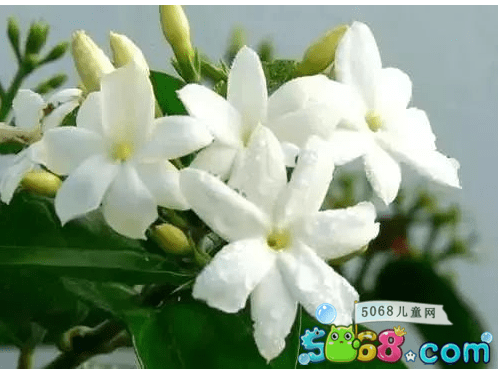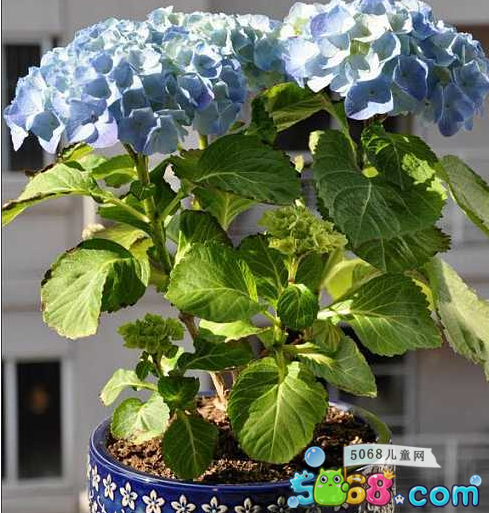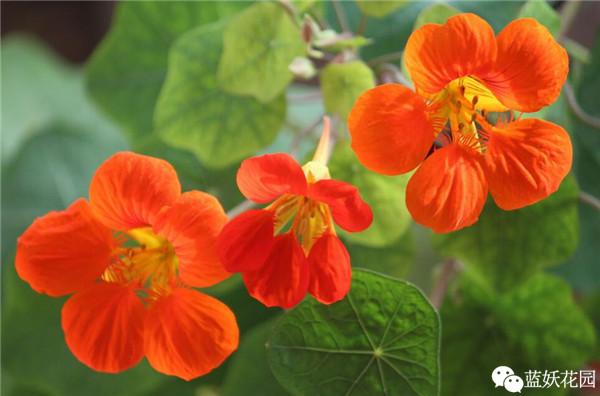How to cultivate jasmine and gardenia
Jasmine and gardenia are the public's favorite flowers, and they are also grown in the family. What are the breeding methods for these two kinds of flowers? The following editor introduces the breeding methods of jasmine and gardenia. I hope you all like it.

Jasmine flower culture method
1. Culture environment: Jasmine is hot, humid, ventilated and needs sufficient light. Cold, southern potted jasmine can be cultivated outside winter, northern autumn and winter need to do a good job of warm work, moving indoors in the south. When the light is strong, the branches are strong, the leaves are dark green, the flowers are fragrant, and when the sun is insufficient, the flowers smell less and less.
2, water management: Jasmine flowers are not resistant to drought and can avoid stagnant water. Water should be poured into the basin in time in the rainy season, otherwise the leaves are easy to yellowing. In summer, hot and sunny days should be watered twice a day, once in the morning and in the evening. If the leaves are found to be curly, spray water on the leaves to promote growth.
3, soil management: cultivate jasmine soil, which is suitable for fertile sandy and semi-sandy soil, and grow in slightly acidic soil with a pH value of 6-6.5, with dense roots and exuberant growth, such as heavy body, lack of substrate, low fertility, poor ventilation, fewer roots, shorter plants, thinner stems and leaves, and fewer flowers.
4, rational fertilization: summer high temperature season is the peak period for jasmine growth, more organic fertilizer and phosphorus and potassium fertilizer, such as peanut cake powder, bone powder, calcium superphosphate and multi-element fertilizer, twice a month. In the summer growing season, there is often the phenomenon of luxuriant branches and leaves but no flowering. The main reason is that too much nitrogen fertilizer is applied, which leads to the growth of leaves. In this case, it is necessary to control fertilizer and water, increase the application of phosphorus and potassium fertilizer, promote the growth of flower buds, and pay attention to jasmine. Move to a place with plenty of sunshine and good ventilation.
5, timely pruning: summer jasmine grows rapidly, should be pruned in time, potted jasmine pruning to maintain the base of 10 cm to 15 cm, promote the thickest new buds, such as new bud growth is very exuberant, growth should be raised 10 cm, trigger secondary branches more flowering, plant shape compact. After the flower has withered, should cut off the flower branch in time, reduce the nutrition consumption, promote the new branch, make the branch dense, the flower bud is many, the flower is many.
6, pest control: Jasmine flowers often have larvae and scales, red spiders are damaged, July to September is the most serious, often eat buds, can spray the right powder or pyrethroid 200 times water, spray once every half a month, that is, should not spray diseases and insect pests, in order to prevent first. The spraying time should be 9:00 and 4pm on a sunny day. It should not be sprayed in the hot sun at noon to prevent phytotoxicity.
How to reproduce Jasmine
Jasmine culture uses cuttings, can also be pressed or ramets.
1. Cutting propagation: from April to October, select mature 1-year-old branches, cut into more than two cuttings, remove lower leaves, insert inserts into mud, half, cover with plastic film, maintain high air humidity, and take root about 40 to 60 days later.
2, making beads: use longer branches, gently scratch the lower part, the sand buried in a small pot, often moisturizing, start to take root in 20 to 30 days, separate the mother plant and plant separately after 2 months.
Fertilization method of Jasmine Flower
From June to September, liquid fertilizer with high phosphorus content should be applied at flowering stage, preferably every 2 to 3 days. Fertilizer can be used to make bean cake and fish water, or ammonium sulfate, calcium superphosphate, general fertilizer. When the ingredients are mixed, the jasmine plant will be burned. It can also be sprayed on leaves with 0.1% potassium dihydrogen phosphate aqueous solution at night, which can also promote more flowering.
Flowering maintenance of Jasmine
Jasmine is very suitable for fat, as long as it is properly maintained, potted jasmine can bloom three times a year. If there is not enough fertilizer and nutrients, it will no longer blossom after blooming. If management is in place, it can be retained from the end of May to early November. The key is to master pruning, sunshine and fertilizer.
Jasmine blossoms from early summer, and if properly managed, there may be three flowers.
At the beginning of June, jasmine flowers begin to bloom. The method of picking flowers is to remove leaves with leaves to promote the re-emergence of new buds. At this time, apply light fertilizer and water twice a week and keep the soil moist.
From the end of June to the beginning of July, this is a good stage of bloom. At this time, it is necessary to strengthen fertilizer and water management, fertilize once every two days, and apply completely decomposed organic liquid fertilizer. The ratio of fertilizer to water is 1:4. Watering should be adequate, usually once a day. Usually watering should be carried out in the morning, while fertilization is better in the evening. This situation lasted until the end of July because there was plenty of fertilizer and flowers could open.
In the first 10 days of August, there is a good stage of flower formation, when fertilization is slightly thicker than before, which is generally suitable for fertilizer and water. In order to promote the better flowering of jasmine, the perphosphate solution can also be sprayed on the leaves. By the end of August, fertilization will be gradually reduced, once every 6 to 7 days, watering will still need more, guaranteed every 2 days.
From early September to early October, the third flower was formed. At this time, we should stop fertilizing and gradually reduce the amount of water. As the weather gets colder, the formation of buds will be affected, so the number of flowers is very small. After the end of October, the flowering ends, only keeping the soil slightly moist.
Propagation methods of Gardenia jasminoides
1. Soil: Gardenia jasminoides is a kind of acid indicator soil, and the slightly acidic soil environment is the key to the growth of Gardenia jasminoides. Generally speaking, the cultivation of gardenia should use fertile, loose, well-drained acid culture soil. The pH value of soil should be controlled between 4.0 and 6.5. If pine sawdust is thoroughly mixed into the soil, the effect is very good. Ohh.
2. Temperature: the growth temperature of Gardenia jasminoides is 18 °C-22 °C, 5 ~ 10 °C in winter, and it is easy to freeze below 10 °C. it is extremely unsuitable for gardenia to grow if the temperature is too low or too high. In summer, gardenia should be placed under sparse forests or under well-ventilated huts with high air humidity and light passing through. In winter, it should be placed in a sunny environment of not less than 0 °C, let it sleep naturally, too high temperature will affect the flowering in the coming year.
3, moisturizing: gardenia, such as damp, increase the amount of water in the growing season. Every time the fur turns white, it must be watered once. The hot summer heat must be sprayed 2-3 times a day to increase air humidity and help cool plants. The bud should not be watered too much after budding, so as not to fall. Watering in winter is better to dry to prevent stagnant water.
4. Fertilizer: gardenia is suitable for fertilizer. In order to meet the fertilizer demand of the growing season and maintain the slightly acidic environment of the soil, ferrous sulfate can be mixed into fertilizer solution for fermentation. After the growing season in April, you can add a dress every half a month. It is better to add some water when fertilizing to prevent burning. Fertilization must grasp the principle of thin fertilizer, apply more, avoid using concentrated fertilizer or raw fertilizer, and stop applying fertilizer during hibernation.
5, timely pruning: the germinating power of Gardenia jasminoides is very strong, branches are easy to overlap, resulting in dense ventilation and scattered nutrition, so we should pay attention to timely pruning. The construction should select three main branches according to the shape of the tree, and other branches that break out of the roots should be cut off at any time. After thanking the gardenia, the branches should be cut off in time to promote the sprouting of new branches. When the new branch of Gardenia jasminoides grows into three parts, it should be placed on top immediately to avoid blind growth.
6, pest control: gardenia is most prone to yellow disease and leaf spot disease, usually should pay attention to prevention and control, if it occurs, corresponding treatment measures should be taken. Common pests include diamondback moths, scales and whiteflies. If you wipe off a small number of pests with a wet cloth, if there are too many, you should spray insecticides. Under normal circumstances, disinfection should be carried out.
Time: 2019-05-12 Click:
- Prev

Culture methods and matters needing attention of potted hydrangea
The hydrangea pattern is full, large and beautiful, and the color of the flowers is also very beautiful, which is pleasing to the eye. Many people like to breed this flowerpot. The following editor introduces some cultivation methods of potted hydrangea. I hope you all like it. Breeding methods of potted hydrangea 1. Soil: hydrangea planting soil is more suitable for loose and fertile
- Next

How to sow the lotus paniculata
From the sowing of the golden lotus to its flowering, flower friends practice all the way, they come to see! (photo) for buds that have been planted for a good time, what they want to know most is how to sow seeds, when to go to the basin, and when to apply topping. The following is a brief description of the cultivation process of Trollius from sowing to harvest. First
Related
- Fuxing push coffee new agricultural production and marketing class: lack of small-scale processing plants
- Jujube rice field leisure farm deep ploughing Yilan for five years to create a space for organic food and play
- Nongyu Farm-A trial of organic papaya for brave women with advanced technology
- Four points for attention in the prevention and control of diseases and insect pests of edible fungi
- How to add nutrient solution to Edible Fungi
- Is there any good way to control edible fungus mites?
- Open Inoculation Technology of Edible Fungi
- Is there any clever way to use fertilizer for edible fungus in winter?
- What agents are used to kill the pathogens of edible fungi in the mushroom shed?
- Rapid drying of Edible Fungi

